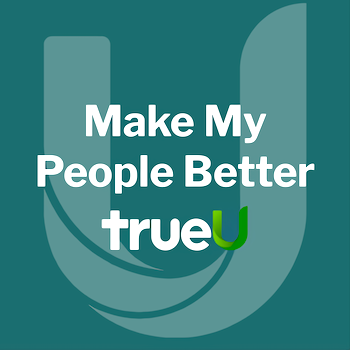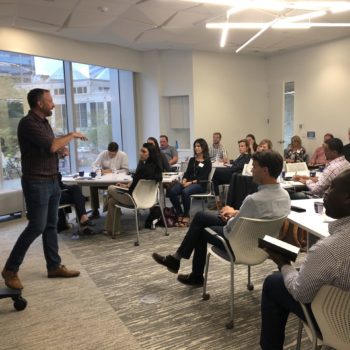Pros know that the technology can be the least challenging piece of the technology, people, and process trifecta when embarking on a major technology initiative. A modernization doesn’t simply put a new system in place; it affects the processes that surround it and the people who use it. For any modernization, people, processes, and technology have to work together for the initiative to be successful initiative—when you’re defining success as an adoption of a modernization not simply implementation of the technology.
The team involved needs to be aligned around the “why” for the modernization, agreeing on the desired outcomes, and focused on the end users who will be dramatically affected by the technology. When beginning a sizable undertaking like a technology modernization, we’ve found that incorporating Design Thinking methodology from the onset can help everyone work together in the same direction. It begins with the Project Kickoff, the meeting designed to bring everyone on the team together, aligning expectations, ensuring that there’s shared understanding of roles and project. At Resultant, we believe that the most important result of this meeting is a shared understanding of our desired outcome, in relation to the end users, the people the modernization affects most directly.
Design Thinking has long been part of Resultant’s DNA and is one of our preferred methods for not only problem solving but for ensuring that people are at the center of every technology initiative and that our teams are rallied around the same “why.” Incorporating Design Thinking helps us lead modernizations that truly transform organizations and meet the needs of the people involved.
Setting the stage for innovation
A lot of the Design Thinking process depends on an improvisational approach. You want the work to happen in the room, during the Project Kickoff. Not to say that preparation isn’t important. It’s imperative for a productive workshop. We have some time-tested advice for using Project Kickoffs to get everyone moving in the same direction.
Get the right people in the room
When ideas (and later efficiencies) are on the line, over-inviting beats under-inviting. Ask for the input of several stakeholders to determine who should participate in the Project Kickoff. It helps to think of this beginning point as a 360 review, wherein the full picture can arise only from gathering views from every vantage. Early alignment across departments and levels prevents pitfalls that get expensive fast.
Meet the participants where they are on their Design Thinking journey
If Design Thinking is new to most, the approach will be different than the one you’d use for seasoned pros. The process is much less effective when people feel flustered by what’s happening, so taking the time to give a little background about Design Thinking quells anxieties, gives contributors the “why” they need, and is much more likely to facilitate the kind of open ideation you need.
Contextualize the session
Experienced facilitators know that even the best-wrought process isn’t perfect for every possibility, and they’re confident and insightful enough to tweak according to what they know of the situation, the people, and the organization they’re addressing. Each session is right-sized accordingly—the time blocks, the activities, the participant list, and the activities to apply each context. Design Thinking isn’t a one-and-done methodology. The process often requires months. However, if time or budget doesn’t allow for following the methodology to the letter throughout the initiative, the Design Thinking spirit and elements can still be infused into any project to drive more successful and aligned outcomes.
Reaching alignment by tearing apart norms
The point of the Design Thinking process is to innovate, and that almost never happens without breaking some rules and breaking a lot of ideas apart.
Participation in general helps cultivate alignment. The fact that there isn’t just a forum for all voices to be heard but a mechanism for ensuring that each person contributes fosters engagement, and it creates the kind of buy-in that would otherwise have been a pipe dream. When every idea counts, every person behind the ideas—even the naysayers—feels valued, too.
Sitting and listening while a kickoff presenter walks through a project charter has never made that happen. Instead of inspiring yawns and resistance, Design Thinking insists on participation and encourages alignment. Excitement, even. When the goal is modernization, alignment, excitement, and focusing on people are imperative for a transformative initiative. Incorporating Design Thinking from the onset is one of the most successful ways to lay this foundation.
“This process engages every person better than any process I’ve seen,” said Resultant Director of Public Sector Services Jessica Carter, who has been incorporating Design Thinking into her work for six years. “It calls everything into question, throws the old way onto its head, and gets everyone walking out of the session in perfect unity. And there’s always a surprise. I’ve never done this without the team taking a completely new approach, sometimes after years of being in the weeds.”
Share:







